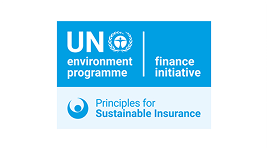Sun Life's Risk Management Framework (RMF) sets out the components of our risk programs and explains how they operate together in conducting our business activities. It promotes the application of a consistent approach to managing risk exposures across Sun Life. Exposures include but aren’t limited to environmental (including climate impacts) and social risks. Our Internal Audit team provides a quarterly opinion on the effectiveness of internal controls, risk management and governance processes to the Audit Committee of the Board. Additionally, our risk management process is included in an annual external audit of Sun Life's internal control over financial reporting.
Our Risk Appetite Policy is integral to our approach. It outlines specific constraints that define the type and amount of risk that Sun Life is willing to accept.
The purpose of the risk management process is to identify, measure, manage, monitor, and report on the key and emerging risks impacting or likely to impact the Business Plan (1-year time horizon), Strategic Plan (3 to 5-year time horizon) and for certain relevant risks, the Long Term time horizon (beyond 5 years, up to and beyond the year 2050). On a quarterly and annual basis, a formal risk identification process is initiated and our risk exposure is reviewed using a variety of methods and measures. To learn more, refer to our Risk Management Framework.
